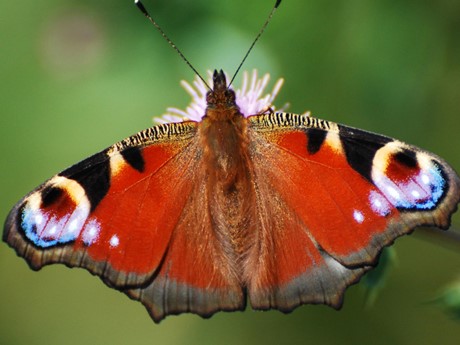Expected date ranges explained
Judith Garforth and Fritha West, 22/06/2022
Our recorders have been sending in their wildlife records for many years now. This means we have a pretty good idea of when to expect certain species to do certain things. However, sometimes unusual weather means that we receive records earlier or later than expected.
Expected date ranges
In 2017, we calculated an 'expected date range' for each species and event by looking back at the previous 10 years of records. We used these expected date ranges to make a helpful calendar poster to show what you can look out for each month of the year.
If you add a record to our website with a date that falls outside of the expected date range, you’ll see a warning message in red:

It’s nothing to worry about! It’s just a double check that you’re absolutely sure this is the correct date. It helps us keep the Nature’s Calendar data as accurate as possible which is very important because it’s often used by scientists for research.
It asks you to check that your date is correct, because it’s possible you may have Error! Hyperlink reference not valid.clicked the wrong day, month or year on the calendar by accident. If the date is correct then you’ll be asked to add a comment about your record before you can continue. You can include any extra details that you think might be interesting and helpful, for example what the weather has been like in your area recently, or if the species is in a sheltered location. If you can add a photo that’s even better, but it’s optional.
Once you’ve saved your record, it goes into the Nature’s Calendar database, but the Nature’s Calendar team will also be alerted to it. This allows us to understand how unusual weather is affecting wildlife immediately and helps us to respond to media and research enquiries. Very occasionally we spot an identification or recording error in which case we’ll be in touch to help, so that we can get the data corrected. A record that falls outside of the expected date range won’t appear on the live map until it has been checked by our team.

Photo: Elderflower, Jane Parker
Regional Differences in Timing
The expected date ranges are calculated using records from all over the UK. Spring species and events tend to be spotted first in the south west of the UK because of the warmer weather. So if you live in Cornwall or Devon you’re more likely to see things right at the start of the expected date range.
Always early
Some individual plants seem to leaf or flower early compared to the others around them. For example, you might have noticed a hedgerow in spring where one hawthorn shrub has it's leaves before all the rest. It’s important to record the same plant year on year, so that you can see the effect of the weather on the individual plant rather than trying to spot the earliest plant in your area.
Don't be put off
Please don’t be put off by the ‘This date fall outside of the expected range’ warning message. It’s just there to keep the data as accurate as possible. We are recalculating the expected date ranges later this year using the most recent data, ready for spring 2020. So hopefully you’ll see the warning message less often, once our expected ranges have been expanded.

